
The Far Green Country: National Park Experiences in our Adventurer
The Far Green Country: National Park Experiences in our Adventurer
Winnebago, national parks, and The Far Green Country.
By: Eli & Kelly Pyke
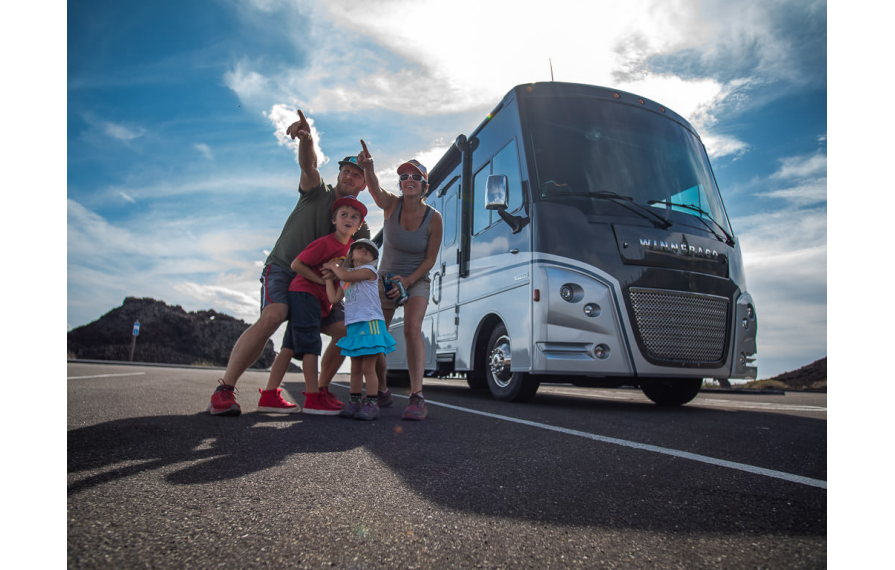
Dada: “What are you most excited about?”
Dakota: “Hiking with mama!”
Isabelle: “Getting my Junior Ranger badge!”
Mama: “I’ll get another stamp in my National Parks passport!
What about you Dada-bear?”
Dada: “I can’t wait to jump in some crystal clear water!”
In 2015, our family of three embarked on a yearlong journey in our newly purchased 20-year-old motorhome through the national parks of the North American West. It was a journey of desperation, as we needed to make an intentional change to heal our marriage and find restoration for our hearts. Out of that adventure came not only hope and healing, but also the birth of our daughter and our first documentary, The Far Green Country – a beautiful story featuring our national parks.
Then, after losing Eli’s father to pancreatic cancer early last year, we decided that the best way to process the grief would be to hit the road again and make a sequel film focused on grief, death, and dying. Having sold our previous RV, we would need to find a motorhome for this journey.
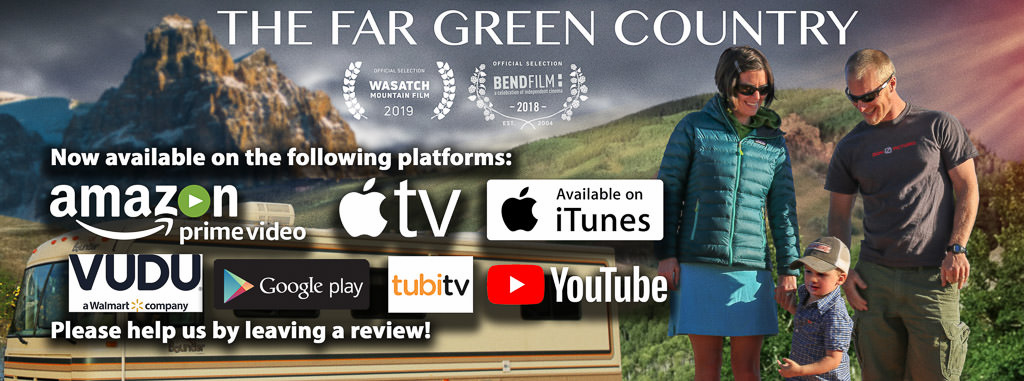
Why We're Visiting the National Parks in a Winnebago
Since Winnebago partnered with the National Park Foundation to support the Find Your Park/Encuentra Tu Parque movement and help all people discover and share their own unique connections to America’s national parks, we knew collaborating with this American-made motorhome company would be the perfect fit. We were so grateful when Winnebago joined the dream by providing us a beautiful Adventurer Class A motorhome and we hit the road in July, with the goal of visiting all the national parks we could along the way.
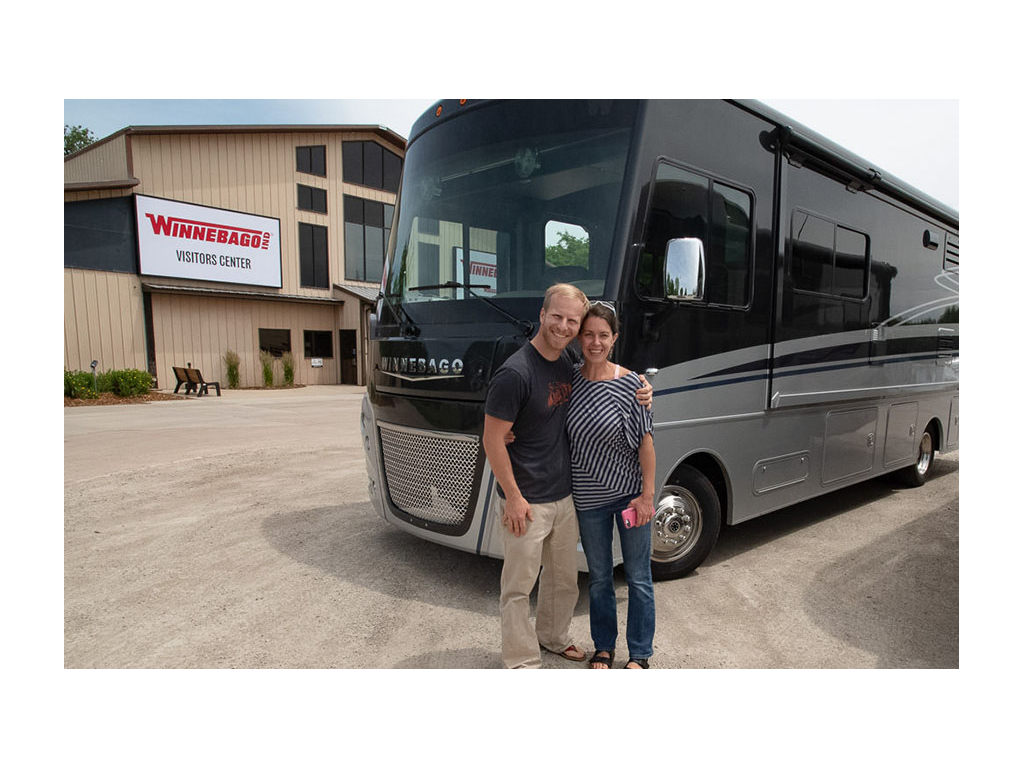
As we mention in our first film, the national parks are “our home away from home.” They are full of beauty, opportunities for adventure, and amazing facilities. They also provide such great resources for us as we homeschool – or “road-school,” as it’s often called. From the Junior Ranger programs, to the interpretive exhibits and signage, to the raw experience of spending time in stunning outdoor environments. We love that we can give our children a unique and experiential education that will impact their entire lives.
Mount Rainier National Park
The first park we visited with our Winnebago Adventurer was Mount Rainier National Park. Situated just 60 miles south of Seattle, this park is home to the enormous Mount Rainier, the Wonderland Trail, and a plethora of glacial-fed rivers and streams that flow down the mountain.
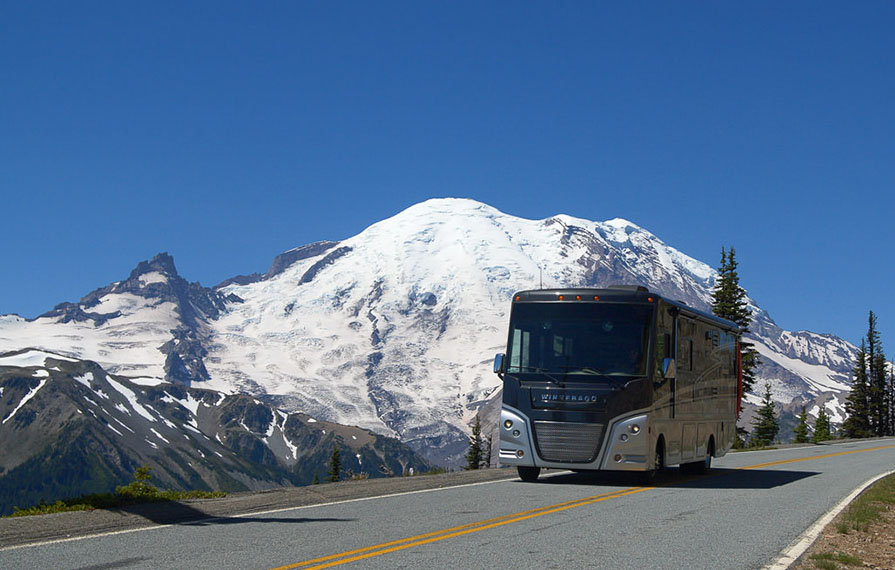
Mount Rainier itself is the tallest mountain in the Cascade Range, at 14,410 feet in elevation. In fact, its topographical prominence (the elevation from the valley floor to its summit) surpasses that of K2, the world’s second tallest mountain. Rainier is also home to the largest glacial mass in the lower 48 states, making it a valuable center for research on glacial health and recession, as well as a treasure of vast amounts of fresh water.
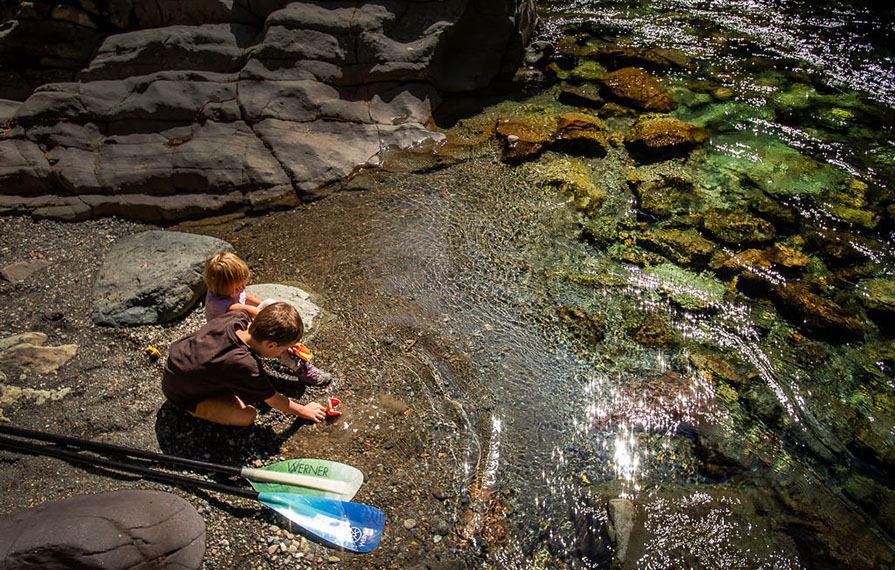
Over 100,000 climbers have attempted to summit Mount Rainier in the last 10 years, and we visited one of the popular climbing trailheads at Sunrise Visitor Center . There is also a famous route called the Wonderland Trail, which circumnavigates the entire mountain. This 93-mile path ascends and descends the many river canyons that flow from the summit, providing spectacular views of the peak from all sides.
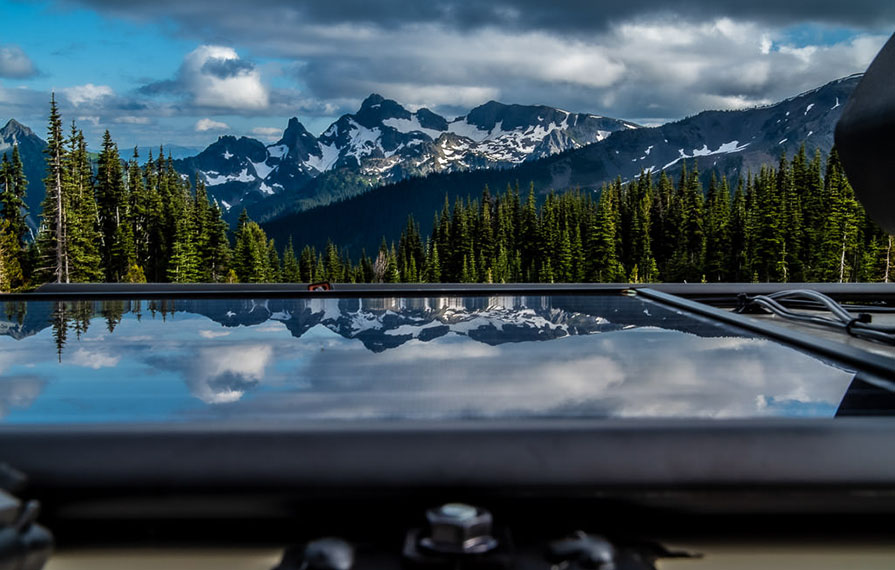
One hypothesis about the original name for Mount Rainier is that it is means “mother of waters.” This description is very fitting, as water flows year-round from its summit due in part to its large glacial mass. Streams surge down hillsides and vegetation grows rich along the trails. In the summer months, the park is known for its vast amount of beautiful wildflowers. It is no wonder why its main trail is named “Wonderland”!
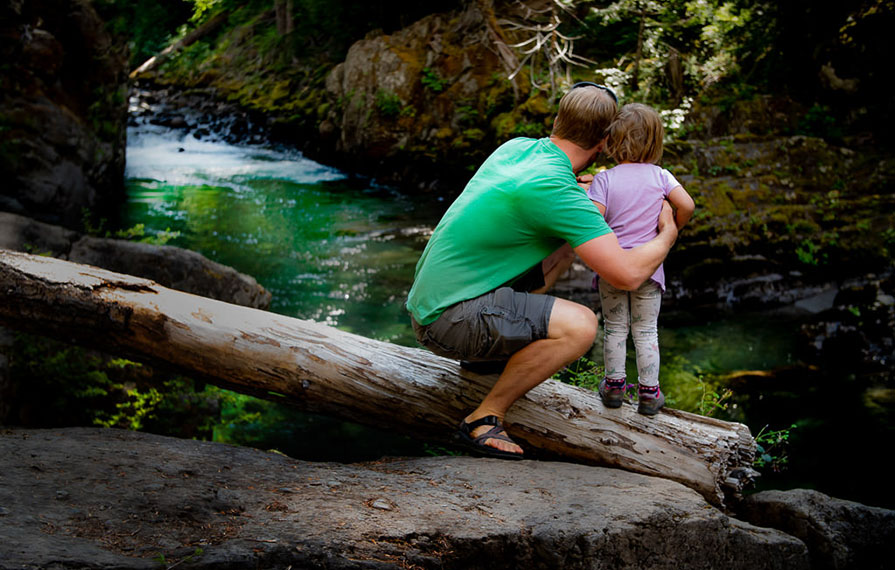
We entered the park from the southeast and camped at Ohanapecosh Campground. Surrounded by giant trees of Western hemlock, Western red cedar, and Douglas fir, the campground is a short walk to the Ohanapecosh Visitor Center and the crystal clear waters of the Ohanapecosh River.
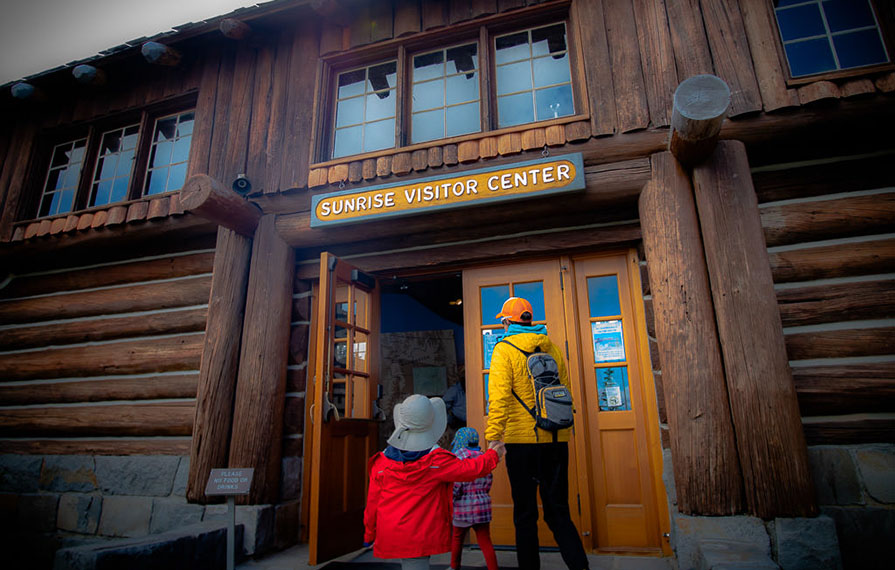
Farther north into the park is Sunrise, the highest viewpoint accessible by vehicle. Our kids got their Junior Ranger badges at the Sunrise Visitor Center and we spent the whole day hiking and exploring the area around it. The trails were perfectly suited for families, and after we got 100 yards from the parking lot, we felt like we had the whole place to ourselves. Storm clouds shrouded the mountain, but every now and then the skies would clear just enough to see the towering peak high above our heads.
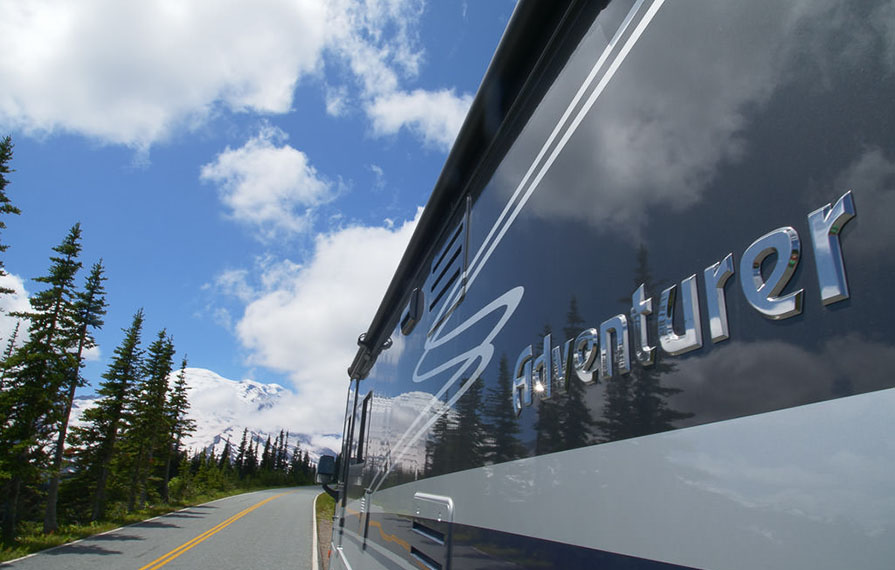
Getting to Sunrise is an adventure of its own, as the road climbs 4,000 feet in elevation from Ohanapecosh Campground, up a very steep grade. Hauling 17,000 pounds of vehicle and cargo up that high isn’t an easy task, but the Ford Triton V10 gas engine in our Winnebago Adventurer charged up it like it was a morning jog.
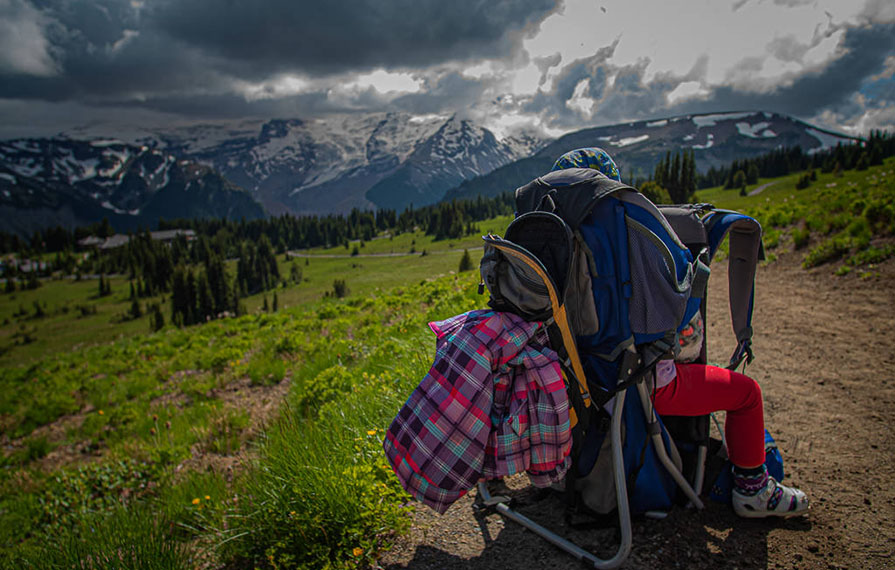
Looking back at our time in Mount Rainier National Park, the highlights were the hikes and views of the gigantic mountain from Sunrise Visitor Center. Another memory that stands out is adventuring off-trail to an unnamed glacial lake at the foot of the mountain, and diving into turquoise blue waters. There were many shrieks of both joy and terror at the water’s shockingly cold temperatures, followed by leisurely lounging on smooth volcanic rocks in the high mountain sunshine.
Craters of the Moon National Monument
Heading east from Washington, we hit central Idaho and Craters of the Moon National Monument and Preserve. Established in 1924, what was once molten flowing lava is now a wilderness of black volcanic rock. The lavas ‘A‘ā (ah-ah) which means “rough on the feet,” flowed more slowly and broke up as it flowed, whereas pāhoehoe (pa-hoy-hoy), which means “ropy,” flowed quickly and cooled into smooth ribbons. Other geologic features found here are spatter cones, cinder cones, and lava tubes.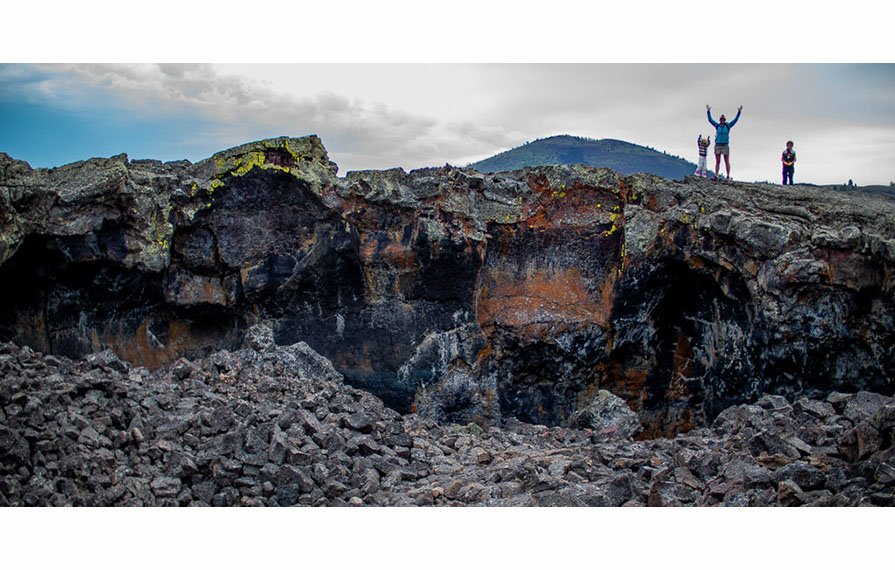 Lava tubes that were once pumping with molten lava have now taken the form of caves. In places, the “roof” of the caves has collapsed, creating arches and windows. The geology is fascinating, and exploring it is even more exciting. In fact, in 1969, NASA sent its Apollo 14 crew to Craters of the Moon in order to study the volcanic geology and prepare for their mission to the Moon itself.
Lava tubes that were once pumping with molten lava have now taken the form of caves. In places, the “roof” of the caves has collapsed, creating arches and windows. The geology is fascinating, and exploring it is even more exciting. In fact, in 1969, NASA sent its Apollo 14 crew to Craters of the Moon in order to study the volcanic geology and prepare for their mission to the Moon itself.
We stayed at Lava Flow Campground, which is just a short walk to the visitor center, has trails leading directly into the lava flows, and an amphitheater for evening ranger talks. There are no services there, however, so come prepared with solar and plenty of water for boondocking!
We were thankful for our Winnebago Adventurer as it has large fresh and grey water tanks for long periods away from hookups. It also came pre-installed with a Zamp Solar charge controller and Zamp Solar roof ports, so we were able to make good use of all the sun to keep us (and a myriad of camera batteries) charged up during our stay with three 100W Zamp Obsidian panels.
Interestingly, Craters of the Moon National Monument has a solar array that offsets roughly 45% of the park’s power needs on site.
We want to be part of utilizing sustainable energy solutions and are thankful to be connected to Winnebago, who supports the national parks and the use of solar in their vehicles; Zamp Solar, who is manufacturing solar energy products here in the US; and our national parks and monuments, like Craters of the Moon, who are not only teaching about sustainable energy but using it as well.
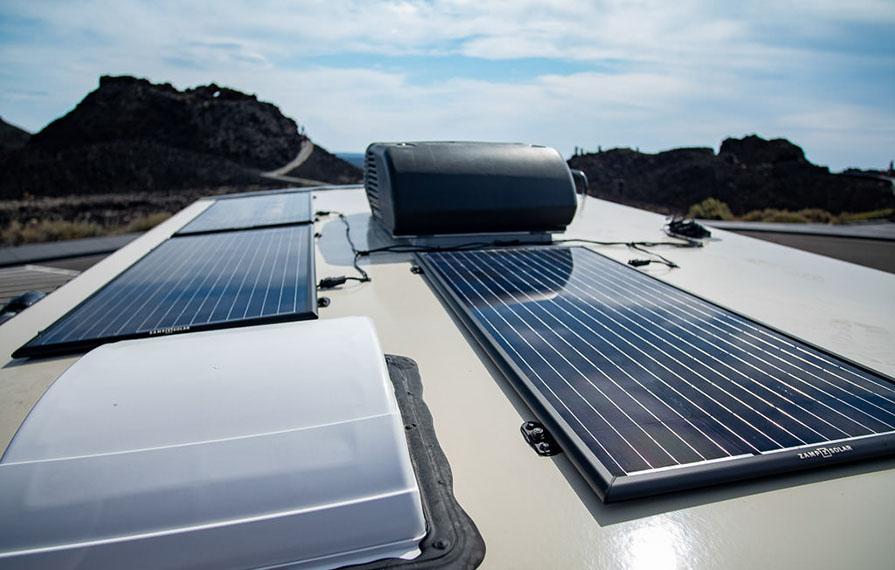
While at the park, Kelly hiked the North Crater Flow Trail - about four miles of hiking through sharp lava rock in blazing heat. I think she felt a bit like Frodo Baggins in Tolkien’s trilogy, The Lord of the Rings, and was happy to see us awaiting her arrival at the Spatter Cones parking lot.
Our favorite features at Craters of the Moon were the lava tubes. Permits are required to explore the caves, so we got those at the visitor center before exploring. Dakota especially loved finding tight spaces that he could wiggle through. 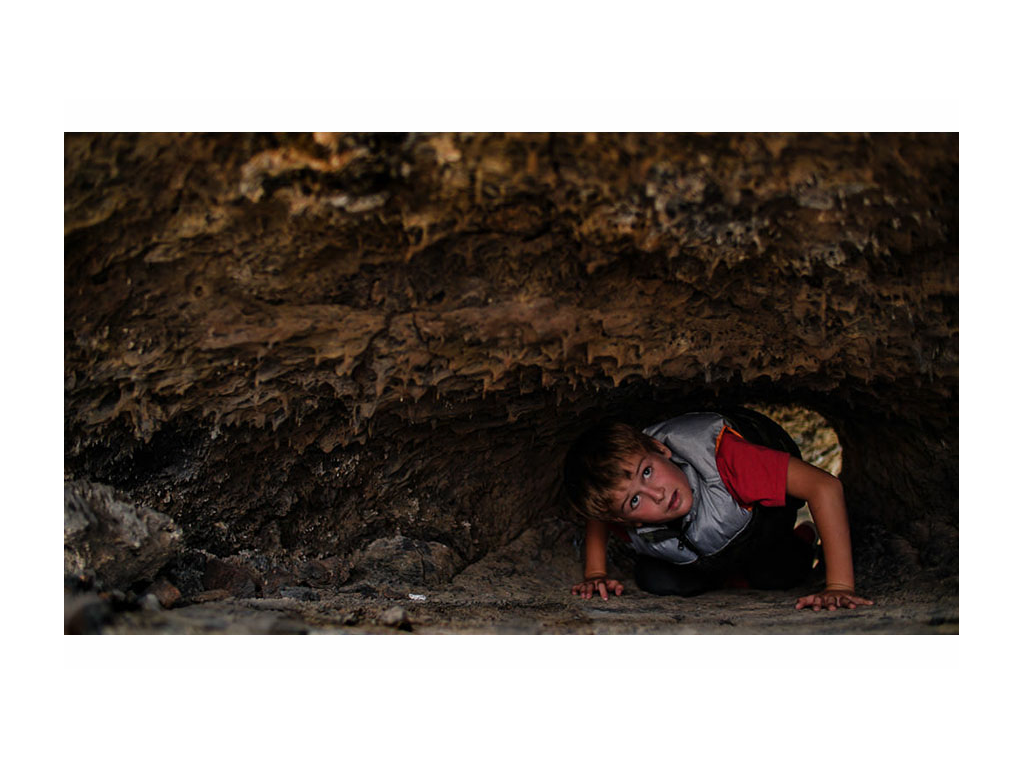
After a full afternoon exploring caves, we settled in for dinner and ice cream cones in a deserted parking lot, as storm clouds and lightning passed overhead. The colors of the sky and the rainbows were magnificent against the black and grey of our Adventurer, and it gave us a great photo opportunity before the night set in.
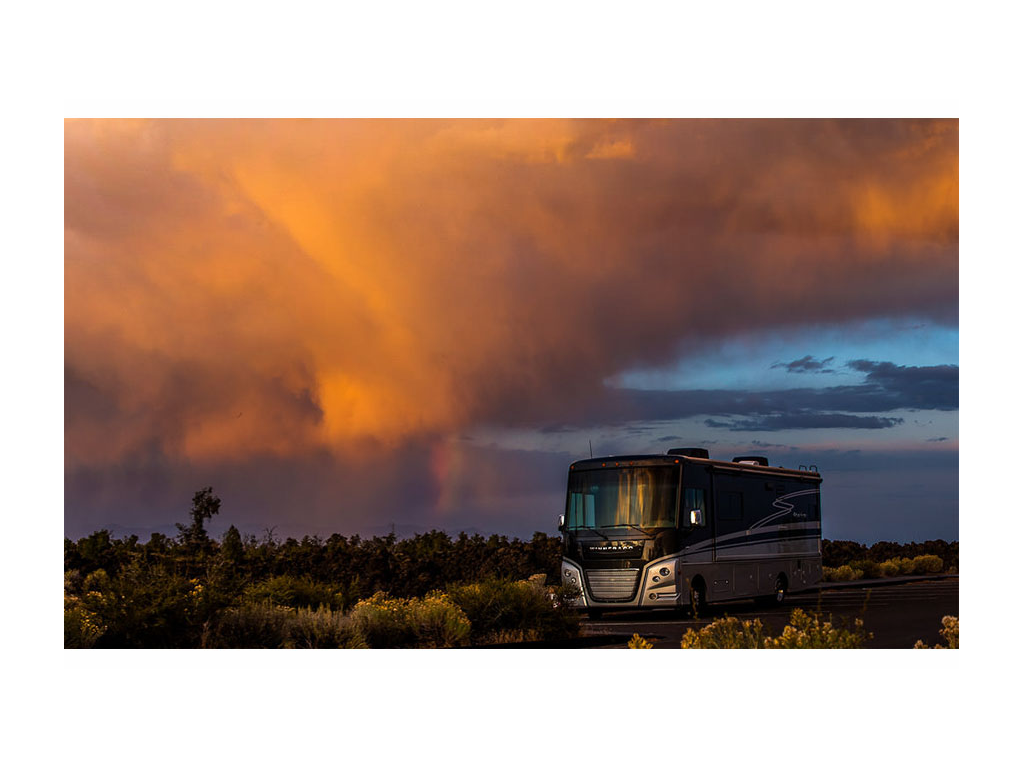
Traveling On
Dakota and Isabelle earned their Junior Ranger badges at both parks, which we love incorporating into our “road-schooling” curriculum, as it brings in aspects of conservation, geology, wildlife biology, and ecology. With ten or more national parks ahead on our itinerary, we were ready to leave Craters of the Moon and continue east! We look forward to sharing more of our journeys with our Winnebago Adventurer in America’s national parks.
The Pykes are currently on the road in their Winnebago Adventurer traveling through America’s National Parks. You can follow their adventures on Instagram @TheFarGreenCountry or on Facebook @TheFarGreenCountry. They will also be sharing more of their adventures here on GoLife over the months to come. If you would like to watch their first documentary, The Far Green Country, you can find it on many digital platforms including Amazon Prime, iTunes, Hulu, and TubiTV. Their website is TheFarGreenCountry.com.
Comments
Comments on this post are moderated, so they will not appear instantly. All relevant questions and helpful notes are welcome! If you have a service inquiry or question related to your RV, please reach out to the customer care team directly using the phone numbers or contact form on this page .